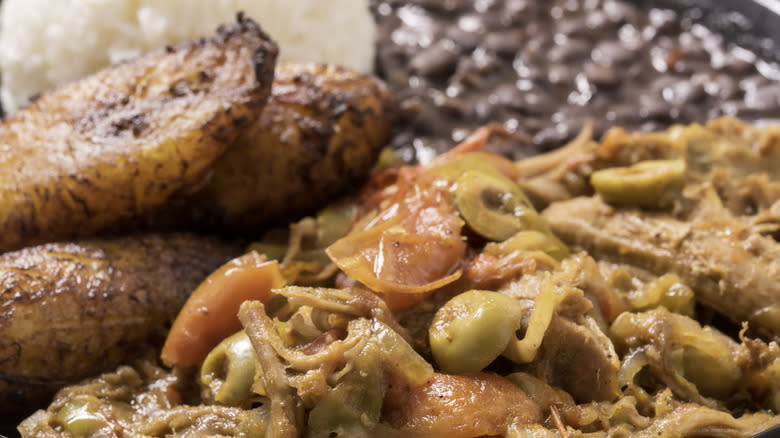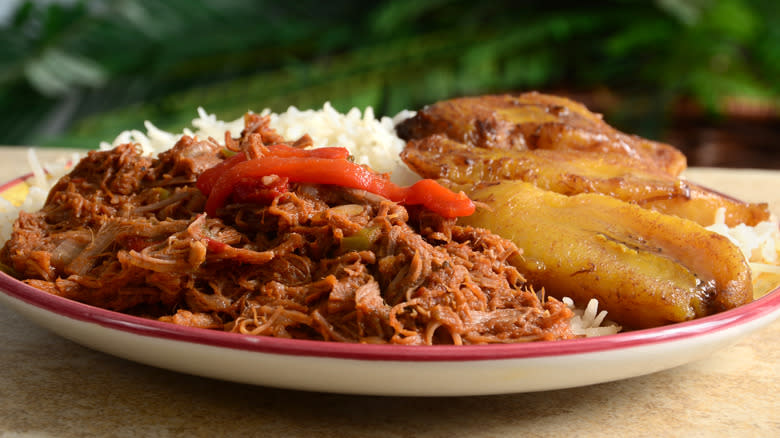Ropa Vieja Is The Cuban Dish That Utilizes Tough Cuts Of Meat

While most of us would rather throw a tough piece of meat out before eating it, cultures throughout history have found creative and delicious ways to transform even the most inedible scraps into tender and delicious dishes. Cuba's national dish, Ropa Vieja, demonstrates how delicious tough cuts of meat can become.
Meaning "old clothes" in Spanish, Ropa Vieja is a flavorful and hearty meat dish made by slow-cooking a tough cut of beef like chuck or flank steak in a tomato-based liquid. However, it would work well with other tough cuts like pork, lamb, or even chicken.
Onions, garlic, peppers, canned tomatoes, and tomato sauce seasoned with a wealth of spices including cumin, paprika, allspice, bay leaves, and oregano create a delicious braising liquid to soften and flavor the meat as it stews for hours in the oven, on the stove, or even in a slow cooker. After slow cooking, the beef is broken down into a saucy, melt-in-your-mouth shredded meat dish Cubans typically enjoy with white rice, black beans, and fried plantains.
Read more: Tips You Need When Cooking With Ground Beef
From The Old World To The New World

While it may be Cuba's national dish, Ropa Vieja traces its origins to Sephardic Jewish traditions in Spain and North Africa dating back 500 years. As Jewish law demands no cooking or physical activity on the Sabbath, Jews made this slow-cooked meat the night before so it would be tender, flavorful, and ready to enjoy on the day of rest.
By the time the dish made it to Cuba in the mid-19th century, it had acquired a charming fable to explain its peculiar name. According to lore, a hungry pauper desperate to feed his family threw old clothes into a boiling pot. As he prayed for sustenance, the old clothes miraculously changed into real meat stew. Perhaps this fabled story alludes to the resourcefulness of the Jews and Cuban cooks who succeeded them. After all, transforming tough, otherwise inedible cuts of meat into a sumptuous, hearty meal is a miraculous feat.
Many modern recipes add Mediterranean-inspired ingredients like green olives, peas, capers, and chopped parsley to honor Ropa Vieja's Iberian roots. In Spain's Canary Islands, garbanzos and potatoes are added to the stew instead of Cuban's classic congri accompaniment.
Read the original article on Tasting Table.

